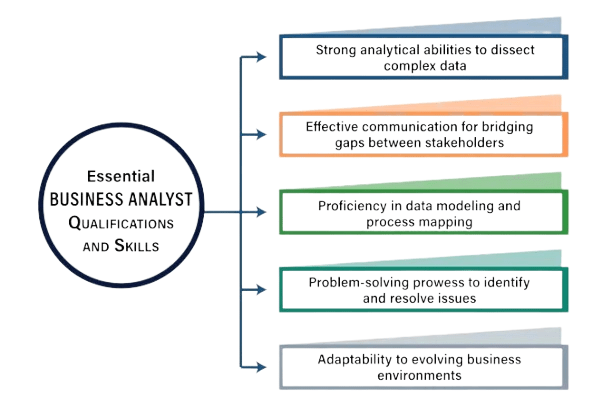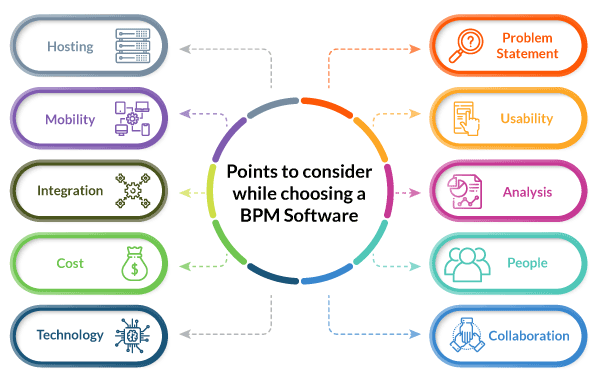
- Introduction to Business Process Analyst
- Core Responsibilities
- Process Mapping
- Process Reengineering
- BPM Tools
- Collaboration with Stakeholders
- KPIs and Metrics
- Automation Opportunities
Introduction to Business Process Analyst
A Business Process Analyst plays a vital role in optimizing an organization’s operations by analyzing and improving business processes. This professional is responsible for identifying inefficiencies, recommending solutions, and ensuring smooth execution of business strategies through data-driven insights. Collaboration with stakeholders is central to the role, as Business Process Analysts often equipped with Business Analyst Training work closely with teams across departments to understand their needs, align objectives, and implement changes effectively. Their work involves mapping current workflows, identifying areas for improvement, and proposing streamlined processes that boost productivity and reduce costs. Utilizing a robust Workflow Management System, they ensure that tasks are executed efficiently and consistently across the organization. By bridging the gap between technical teams and business units, Business Process Analysts help drive continuous improvement and innovation. Their analytical skills, combined with strategic thinking and effective communication, make them essential contributors to organizational success in today’s fast-paced business environment.
Are You Interested in Learning More About Web Developer Certification? Sign Up For Our Business Analyst Online Training Today!
Core Responsibilities
- Process Mapping: One of the primary tasks is to visually represent business processes to understand workflows, identify bottlenecks, and highlight areas for improvement.
- BPM Tools: A Business Process Analyst leverages BPM tools (Business Process Management) to automate processes, manage workflows, and ensure that all tasks are performed in line with organizational goals drawing on concepts from What Is Business Analytics And How It Works to inform data-driven decision-making and continuous improvement.
- Process Reengineering: The role often involves Process Reengineering, where outdated or inefficient processes are restructured to improve performance, reduce costs, and enhance productivity.
The core responsibilities of a Business Process Analyst revolve around improving operational efficiency, ensuring effective communication across departments, and driving the organization’s continuous improvement efforts. They analyze workflows, identify inefficiencies, and collaborate with stakeholders to streamline processes. Here are the key responsibilities:

- KPIs and Metrics: A critical responsibility is to define and track KPIs and Metrics to measure the effectiveness of processes, identify areas of improvement, and ensure that objectives align with business goals.
- Key Performance Indicators (KPIs): By establishing clear Key Performance Indicators (KPIs), the analyst ensures that business processes are aligned with organizational goals and performance expectations, facilitating better decision-making.
- Stakeholder Collaboration: Effective communication and collaboration with stakeholders are essential to ensure that process improvements meet the needs of all departments and align with broader business objectives.
- Process Mapping: Before starting the reengineering process, Process Mapping is crucial to document current workflows, identify bottlenecks, and visualize areas that need improvement. It serves as the foundation for redesigning the process effectively.
- BPM Tools: To facilitate process reengineering, BPM tools (Business Process Management) are used to automate and manage workflows. These tools allow the analyst to design, test, and implement new processes efficiently, ensuring alignment with business goals. In data-heavy environments, understanding How to Convert JSON to Excel can also support better analysis and reporting during process optimization.
- Eliminating Redundancy: One of the main objectives of Process Reengineering is to eliminate redundant tasks and streamline workflows. This can significantly reduce operational costs and increase the speed of execution.
- Aligning with KPIs and Metrics: Effective Process Reengineering involves establishing new KPIs and Metrics to measure the success of the redesigned processes. These metrics help track improvements in efficiency, cost reduction, and productivity.
- Key Performance Indicators (KPIs): By setting clear Key Performance Indicators (KPIs), the Business Process Analyst ensures that the reengineered processes align with organizational goals and deliver tangible results.
- Continuous Improvement: Process Reengineering is not a one-time event but an ongoing effort. Regularly reviewing processes and performance ensures that the organization remains agile and continues to improve over time, adapting to changing market conditions.
- Understanding Stakeholder Needs: A Business Process Analyst works closely with stakeholders to understand their unique requirements, challenges, and objectives, which is essential for designing processes that meet organizational goals.
- Open Communication: Clear and open communication is crucial for fostering collaboration. Regular discussions with stakeholders help build trust and ensure that everyone is on the same page regarding process changes and expectations an approach that supports a Complete Business Impact Analysis by capturing diverse insights and anticipating potential impacts across the organization.
- Gathering Feedback: Continuous feedback from stakeholders helps the Business Process Analyst refine processes and make data-driven decisions. It ensures that the improvements made are effective and provide value to the organization.
- Aligning Objectives: Successful collaboration ensures that the redesigned processes align with the broader goals of the organization, balancing stakeholder priorities and business outcomes.
- Utilizing Workflow Management System: A Workflow Management System helps streamline collaboration by providing a centralized platform for communication, task tracking, and document sharing. This ensures that stakeholders are consistently updated on the status of process improvements.
- Ensuring Cross-Department Cooperation: Collaboration with stakeholders promotes teamwork across different departments, ensuring that the changes made to one process do not negatively affect others. It fosters a holistic approach to process improvement.
Process Mapping
Process Mapping is a critical activity for a Business Process Analyst, as it involves creating a visual representation of business workflows to identify inefficiencies and areas for improvement. By mapping out the current processes, analysts can better understand the sequence of tasks, decision points, and resource allocation, which allows for clearer identification of bottlenecks, redundancies, and delays. Effective collaboration with stakeholders is essential during this phase, as it ensures that the perspectives and insights of various teams are considered when documenting the processes an area where strong Lead Business Analyst Skills play a crucial role in facilitating alignment and clarity. Engaging stakeholders from different departments provides a comprehensive understanding of how each part of the organization functions and interacts. Furthermore, Workflow Management System tools are often employed to streamline and automate process mapping, providing real-time insights into the flow of tasks, timelines, and dependencies. These tools allow for more accurate analysis, better tracking of process performance, and easier implementation of improvements. Through Process Mapping, a Business Process Analyst can establish a clear picture of existing operations, enabling informed decisions about optimizing workflows, reducing inefficiencies, and aligning processes with overall business objectives. This process is foundational to any successful business transformation and ensures that the organization operates in a more streamlined, efficient manner.
Are You Preparing for Business Analyst Jobs? Check Out ACTE’s Business Analyst Interview Questions & Answers to Boost Your Preparation!
Process Reengineering
Process Reengineering involves the fundamental redesign of business processes to achieve dramatic improvements in productivity, efficiency, and quality. By rethinking how work is done, a Business Process Analyst can eliminate inefficiencies, streamline operations, and enhance overall performance. Here are the key elements involved in Process Reengineering:
Are You Considering Pursuing a Master’s Degree in Business Analyst? Enroll For Business Analyst Masters Program Training course Today!
BPM Tools
BPM Tools (Business Process Management Tools) are crucial for optimizing and automating business workflows, enabling organizations to improve efficiency, reduce costs, and ensure consistency. These tools allow Business Process Analysts to design, model, monitor, and manage business processes in real time. One key advantage is their ability to foster Collaboration with Stakeholders. By providing a centralized platform, BPM tools ensure that all relevant teams can contribute to the design and refinement of processes helping to align the objectives of various departments an approach further enhanced by professionals with Business Analyst Training Additionally, when integrated with a Workflow Management System, these tools enable better tracking and management of tasks, deadlines, and progress. This integration provides visibility into the performance of each workflow, highlighting bottlenecks and areas needing improvement. With automated task assignments and monitoring capabilities, BPM Tools significantly reduce the risk of human error while speeding up execution. By offering real-time insights into process performance, these tools empower organizations to continually refine and adapt workflows, ensuring long-term success and efficiency.

Collaboration with Stakeholders
Collaboration with Stakeholders is a critical aspect of a Business Process Analyst’s role, as it ensures that process improvements align with the goals and needs of all departments. Engaging with stakeholders from various levels within the organization helps identify pain points, gather diverse perspectives, and ensure that proposed solutions are practical and effective. Here are the key aspects of successful Collaboration with Stakeholders:
KPIs and Metrics
KPIs and Metrics are essential for evaluating the success of business processes and ensuring that objectives are met. In the context of process improvement, Process Mapping is the first step, where workflows are visually documented to identify areas of inefficiency. Once the processes are mapped, BPM Tools are often employed to automate and monitor them, enabling real-time tracking of progress. By utilizing these tools, a Business Process Analyst can define relevant Key Performance Indicators (KPIs) to measure how well processes are performing against the organization’s goals an approach often introduced in a Business Analysis Tutorial for Beginners to help new analysts understand performance tracking and process improvement. Through Process Reengineering, existing processes are redesigned to improve performance, and KPIs are crucial to track the impact of these changes. For example, KPIs could include cycle time, cost per transaction, or customer satisfaction, depending on the business’s focus. Metrics offer detailed insights into the efficiency and effectiveness of processes, helping analysts spot areas needing improvement. The use of KPIs and Metrics allows businesses to make data-driven decisions, monitor continuous improvement, and maintain alignment with strategic objectives. By consistently reviewing these indicators, organizations can identify successes, address weaknesses, and ensure sustainable growth and operational excellence. These tools and techniques provide a foundation for ongoing performance management and business optimization.
Are You Interested in Learning More About Business Analyst? Sign Up For Our Business Analyst Online Training Today!
Automation Opportunities
Identifying Automation Opportunities is a key focus for Business Process Analysts aiming to improve operational efficiency and reduce costs. The process begins with Process Mapping, which helps visualize the current workflows and pinpoint areas where automation can drive significant improvements. By analyzing these mapped processes, analysts can identify repetitive, time-consuming tasks that are prime candidates for automation. Utilizing BPM Tools allows for the automation of these tasks, enabling smoother and faster execution, which not only saves time but also reduces the risk of human error. In conjunction with process reengineering, automation can be leveraged to restructure processes eliminating inefficiencies and optimizing workflows especially when guided by insights gained through Business Analyst Training Once automation is in place, KPIs and Metrics become essential for monitoring the success of the new automated processes. These indicators, such as time saved, cost reductions, or improved customer satisfaction, offer insights into the effectiveness of the automation. Key Performance Indicators (KPIs) help ensure that automation aligns with the organization’s strategic objectives and contributes to the overall performance goals. By continuously assessing KPIs and Metrics, organizations can fine-tune their automated processes, ensuring that they remain efficient, scalable, and capable of driving long-term success. Identifying and implementing Automation Opportunities ultimately leads to enhanced productivity and operational excellence.




